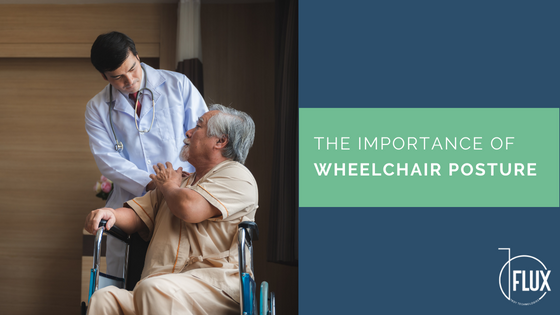The Importance of Posture for Wheelchair Users
We all know that wheelchair life can be a bumpy ride with unexpected aches and pains, but did you know that your posture can make a huge difference? Maintaining good posture can help reduce aches and pains and enhance overall well-being.
Whether you're a new wheelchair user or have been using a wheelchair for years, understanding the importance of posture and how to maintain it can make a significant difference in your well-being. Chronic pain and discomfort do not have to be a permanent part of your life!
Determine the Root Cause of Your Aches and Pains
There may be a handful of culprits behind your aches and pains — wrong chair dimensions, poor posture, or even a lack of physical activity. To determine the root cause of your discomfort, follow these three simple steps:
Wheelchairs are not one-size-fits-all, and the dimensions of your chair should fit your body. You risk pressure sores and unnatural postures if the seat is too wide or narrow. Similarly, you want the seat to be the correct length (you should be able to fit two fingers between the back of your knees and the end of the seat) in order to avoid too much pressure on the buttocks or tension in the knees.
Next, take a look at your armrest height. Your elbows should be bent at 90° when your arms rest on them, so you don’t strain your neck and shoulder muscles.
Finally, ensure that the footrest is at an angle that feels comfortable for the ankles and knees. Some experts recommend keeping the footrest at a 90° angle, but we’ve found that some ankles and knees are happier when the footrest is slightly adjusted — so experiment and see what feels best for you!
When you have an appropriately sized chair, you’re much less likely to experience muscle tension and joint pain, making good posture much easier to achieve!
Good posture takes practice — so don’t expect to be perfect immediately or all the time! Our top three tips for good wheelchair posture are:
Sit up straight: The most basic but effective tip is to sit up straight. Slouching puts pressure on your spine and can lead to pain and discomfort. So, sit up tall, relax your shoulders, and avoid leaning to one side.
Adjust your seat: Make sure your wheelchair is adjusted to the right height and angle (see above). Your hips should be pushed all the way back in the chair, and the backrest should support your entire back.
Use a cushion: A good cushion can help distribute your weight more evenly and relieve pressure on your spine.
Finally, you may find your muscles get tired from practicing good posture (this will go away over time!) Stretching can help relieve muscle tension and improve your flexibility. Try doing some simple stretches for your neck, shoulders, and back. Just be sure to avoid any movements that cause pain.
Additionally, exercise is an excellent way to improve your posture and overall health. Talk to your doctor or physical therapist about safe exercises you can do to strengthen your core and back muscles and check out our recommended exercises here!
Improve Your Overall Well-Being
Finding the right chair for your body depends not only on your body but on your lifestyle as well. And sometimes, a comfortable chair is a matter of finding the perfect chair accessory like foot plates or a seat reducer.
Remember, improving your posture takes time and practice, so be patient with yourself. By following these tips and making small changes to your daily routine, you can help reduce pain and discomfort and improve your overall well-being.

